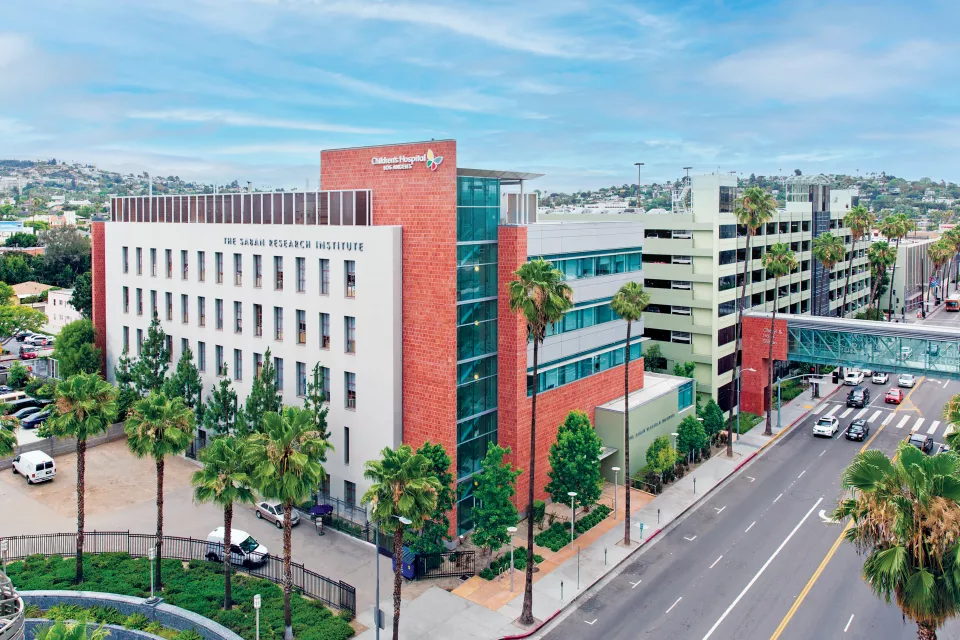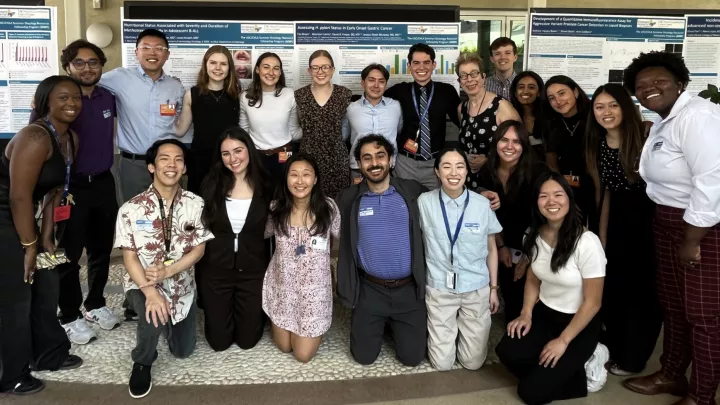Research Topics
- Determine the regulatory mechanisms controlling ErbB4 ligand expression and ErbB4 activation in healthy and diseased intestines.
- Test whether ErbB4-induced COX-2 accumulation predisposes the colon epithelium to cellular transformation/tumorigenesis.
- Determine whether ErbB4 activation with exogenous ligand is therapeutic in experimental IBD models.
- Identify novel downstream targets of ErbB receptor signaling and determine their role(s) in intestinal homeostasis and disease.
Research Overview
We study the molecular mechanisms that drive intestinal repair after injury or inflammation. Our research program in the Saban Research Institute at Children's Hospital Los Angeles is focused on the involvement of ErbB receptor tyrosine kinases and their cognate ligands in the intestinal response to injury, intestinal inflammation and colitis-associated carcinogenesis.
Crohn’s disease and ulcerative colitis, collectively known as the inflammatory bowel diseases (IBD), are chronic disorders characterized by high levels of inflammatory cytokines which can damage or kill colon epithelial cells. Colon epithelial apoptosis contributes to a breakdown of the barrier separating the organism from the contents of the intestine, leading to exacerbated injury and inflammation. Identifying signaling pathways which can be used to protect the colon epithelium could dramatically improve treatment of IBD.
In particular, we are interested in the physiological function of ErbB4, the least-well understood member of the ErbB family. Cultured colon epithelial cells expressing ErbB4 are resistant to cytokine-induced apoptosis via a PI3K and COX-2 dependent mechanism. However, ErbB4 is paradoxically present at high levels in the colon mucosa of both mice with experimental colitis and human inflammatory bowel disease patients, indicating that expression of this receptor alone is insufficient to protect the gut in vivo. This may reflect a lack of appropriate ErbB4-activating ligands in the inflammatory milieu.
Key Findings
The ErbB4 growth factor receptor is required for colon epithelial cell survival in the presence of TNF. Gastroenterology. 136(1):217-26. 2009
In this study, we demonstrated that ErbB4 expression is elevated in human colitis and experimental IBD models. Furthermore, we showed that ErbB4 expression promotes colon epithelial cell survival in the presence of inflammatory cytokines. This work represented the first identification of a role for ErbB4 in intestinal cell physiology.
ErbB4 promotes cyclooxygenase-2 expression and cell survival in colon epithelial cells. Lab. Invest. 90(10): 1415-24. 2010
This paper defines a signaling pathway downstream of ErbB4 leading to induction of COX-2, a key molecule in both the intestinal response to inflammation and colitis-associated cancer. We found that ErbB4 promotes COX-2 expression through a PI3K- and Src-dependent pathway.
Neuregulin-4 is a survival factor for colon epithelial cells both in culture and in vivo. Journal of Biological Chemistry. 287:39850-8. 2012
Neuregulin-4 is a selective ligand for ErbB4. In this study, we show that inflammatory cytokine-induced colonocyte apoptosis is blocked by neuregulin-4, but proliferation and migration are not affected. Thus, ErbB4 activation by neuregulin-4 is a specific anti-apoptotic signal, and neuregulin-4/ErbB4 signaling might be therapeutically useful for diseases involving excessive epithelial apoptosis.
Current Funding
NIH R01DK095004: Regulation of Colon Epithelial Cell Survival by NRG4-ErbB4 Signaling
This project is designed to test the hypothesis that down-regulation of NRG4 worsens colitis, and thus exogenous NRG4 treatment may improve colitis by activating anti-apoptotic signaling in colon epithelial cells.
American Cancer Society Research Scholar Grant: The role of ErbB4 in colon cancer
This project is designed to test the hypothesis that misregulated ErbB4 expression promotes human colorectal cancer cell survival and metastasis.


